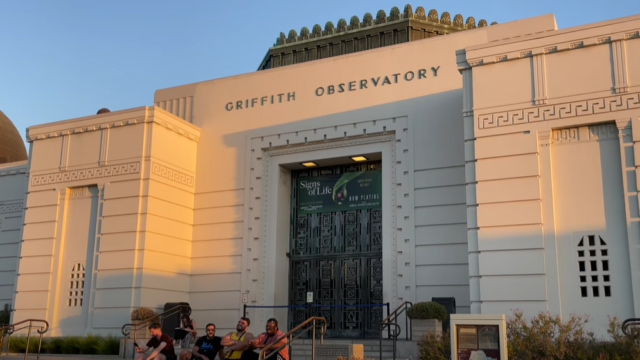Why is the Griffith Observatory Famous?
Perched atop the southern face of Mount Hollywood in Los Angeles, California, the Griffith Observatory is one of the most recognizable landmarks in the city. The observatory, which opened its doors to the public in 1935, has since become a cultural icon and a beacon of scientific exploration in the United States.
The Griffith Observatory owes its fame to a combination of factors, including its striking architecture, its stunning views of Los Angeles, and its world-class collection of astronomical artifacts and exhibits. However, what truly sets the observatory apart is its long history of scientific research and education, as well as its role as a popular destination for both locals and tourists alike.
One of the main reasons why the Griffith Observatory has become so famous is its stunning architecture. Designed in the Art Deco style by architect John C. Austin and funded by philanthropist Griffith J. Griffith, the observatory’s building is an architectural masterpiece that has been featured in numerous movies, television shows, and music videos. Its distinctive features include a copper dome that houses a 12-inch Zeiss refracting telescope, as well as a series of impressive murals by artist Hugo Ballin that depict the history of science and the cosmos.
Another factor that contributes to the observatory’s fame is its location. Situated on a hilltop overlooking the sprawling city of Los Angeles, the observatory offers visitors breathtaking views of the cityscape below. From the observatory’s outdoor terraces, visitors can see iconic landmarks such as the Hollywood sign, downtown Los Angeles, and the Pacific Ocean in the distance.
However, what truly sets the Griffith Observatory apart is its scientific significance. Since its inception, the observatory has been dedicated to advancing scientific research and education. In the early years of the observatory, it played a crucial role in advancing the field of astrophysics, with its staff conducting pioneering research on topics such as the spectra of stars, the composition of the sun, and the structure of the Milky Way galaxy.
Today, the Griffith Observatory continues to be a hub of scientific research and education. Its staff of astronomers and educators work tirelessly to create engaging exhibits and programs that introduce visitors of all ages to the wonders of the universe. The observatory’s collection of artifacts and exhibits includes a range of telescopes, including the 12-inch Zeiss refractor, as well as a Foucault pendulum, a Tesla coil, and a host of other scientific instruments.
In addition to its impressive collection of artifacts, the Griffith Observatory also offers a range of educational programs and events. The observatory’s planetarium is one of the most popular attractions, offering visitors immersive shows that transport them to distant galaxies, explore the mysteries of black holes, and delve into the history of the universe. The observatory also hosts regular lectures, workshops, and star parties, providing visitors with the opportunity to learn from experts in the field and engage in hands-on scientific exploration.
Perhaps what is most remarkable about the Griffith Observatory, however, is its enduring popularity. Since its opening in 1935, the observatory has welcomed millions of visitors from around the world. Whether visitors come to gaze at the stars through one of the observatory’s telescopes, to learn about the history of astronomy, or simply to enjoy the breathtaking views of Los Angeles, the Griffith Observatory has something to offer everyone.
In recent years, the observatory’s popularity has only continued to grow, thanks in part to its appearances in numerous movies and television shows. The observatory has been featured in a wide range of productions, from classic films such as “Rebel Without a Cause” and “La La Land” to modern blockbusters like “Transformers” and “Iron Man.” These appearances have helped to cement the Griffith Observatory’s place as an iconic symbol of Los Angeles and a cultural touchstone for generations to come.
Despite its fame and popularity, the Griffith Observatory has faced its share of challenges over the years. In 1971, the observatory was forced to close its doors temporarily due to a lack of funding, prompting a public outcry that ultimately led to its reopening. More recently, the observatory has faced challenges related to its aging infrastructure, with the need for extensive repairs and renovations becoming increasingly urgent.
To address these challenges, the Griffith Observatory has embarked on a major renovation project aimed at preserving and enhancing the observatory for future generations. The project, which began in 2002 and is still ongoing, has involved extensive renovations to the observatory’s facilities and exhibits, as well as the construction of a new underground parking garage and a range of other upgrades.
Despite the challenges, the Griffith Observatory remains an enduring symbol of scientific exploration and discovery. From its stunning architecture to its world-class collection of exhibits and programs, the observatory continues to inspire visitors of all ages to look up at the night sky and wonder at the mysteries of the universe.
The Griffith Observatory is famous for a number of reasons, including its striking architecture, its stunning views of Los Angeles, and its world-class collection of astronomical artifacts and exhibits. However, what truly sets the observatory apart is its long history of scientific research and education, as well as its enduring popularity as a destination for both locals and tourists alike. As the observatory continues to evolve and adapt to meet the challenges of the future, its place as a cultural touchstone and beacon of scientific exploration is sure to remain secure for generations to come.
